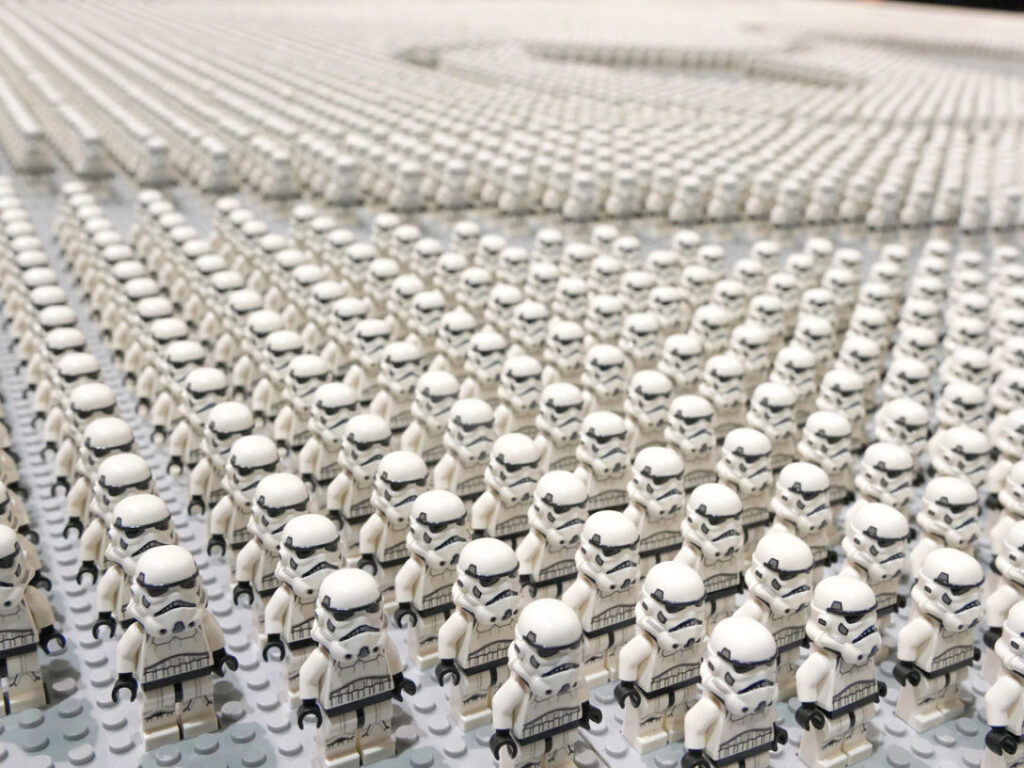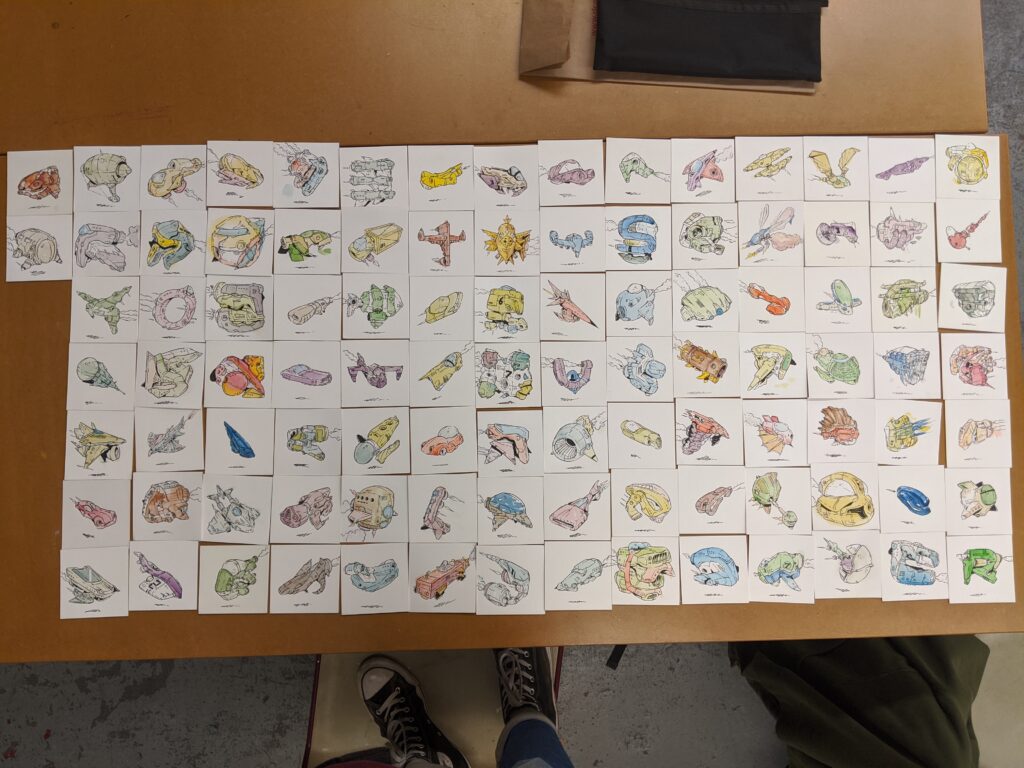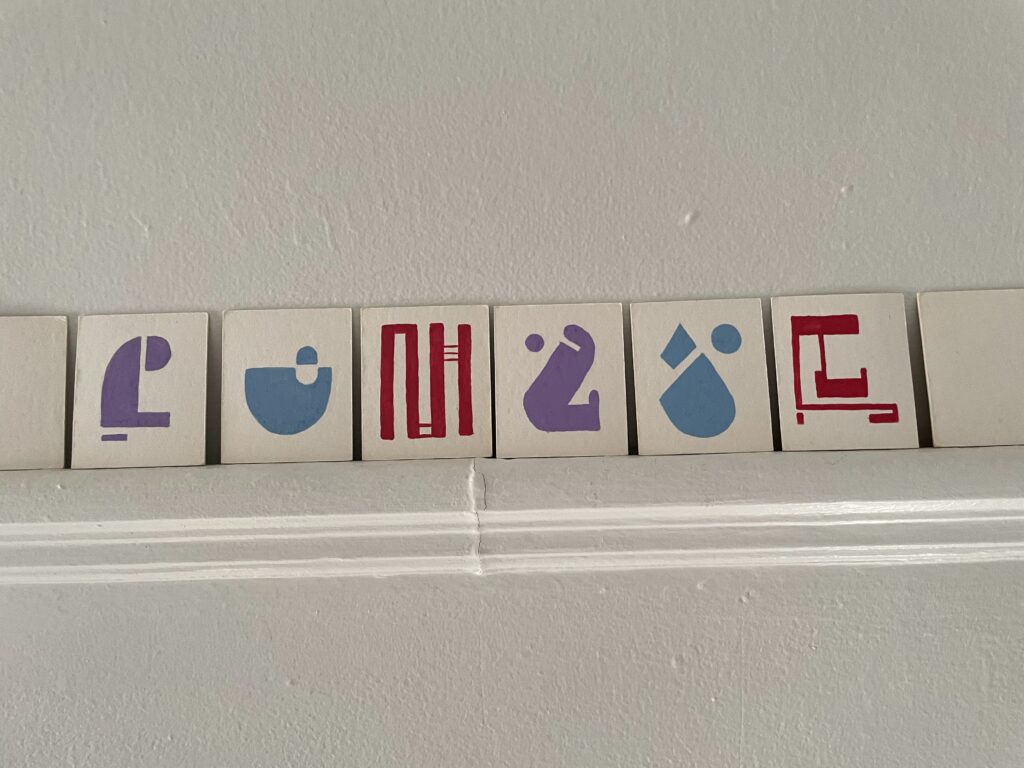Even crude work becomes impressive in high enough quantity. Like Jason Polan’s Every Person in New York.

Pretty much anything becomes impressive or beautiful to us humans in high enough quantity. LEGO clone troopers. Layers of paint. Words repeated a 100,000 times in a row.

Sometimes, if you find yourself struggling to create a singular masterpiece – create 50 or 100 or 1,000 small, crude pieces. And the mass collective can become the singular masterpiece.
If you’re struggling to write the book, just get one sentence down today. In her book on writing and life, Bird by Bird, Anne Lamott describes her own writing process. She sits at her desk, wondering what on God’s green earth to write, maybe hyperventilating a little, until she finally notices the 1-inch picture frame beside her monitor.
“It reminds me that all I have todo is to write down as much as I can see through a one-inch picture frame. This is all I have to bite off for the time being. All I am going to do right now, for example, is write that one paragraph that sets the story in my hometown, in the late fifties, when the trains were still running.”
The title of that chapter is “Short Assignments.”
Lots of short assignments lead to big payoffs. Often times, quality only comes with quantity. With practice. With repetition. Or simply, with enough of the bad that it simply morphs into a giant, singular good. David Bayles and Ted Orland display this idea beautifully in their book, Art & Fear:
“[A] ceramics teacher announced on opening day that he was dividing the class into two groups. All those on the left side of the studio, he said, would be graded solely on the quantity of work they produced, all those on the right solely on its quality. His procedure was simple: on the final day of class he would bring in his bathroom scales and weigh the work of the “quantity” group: fifty pound of pots rated an “A”, forty pounds a “B”, and so on. Those being graded on “quality”, however, needed to produce only one pot — albeit a perfect one — to get an “A”. Well, came grading time and a curious fact emerged: the works of highest quality were all produced by the group being graded for quantity. It seems that while the “quantity” group was busily churning out piles of work – and learning from their mistakes — the “quality” group had sat theorizing about perfection, and in the end had little more to show for their efforts than grandiose theories and a pile of dead clay.”

This project – drawing 100 of something – taught me this lesson in my second year of art school. In my case, it was finding spaceships within splotches of watercolor.
Today, I started a new quantity-over-quality project, with these 2×3 inch paintings of shapes. It was fun to paint with real brushes again, rather than my stylus and computer. And though these are not special in any way individually, I’m hoping once I fill a wall with 30 or 40 of them, the quantity will mask the crudity.
